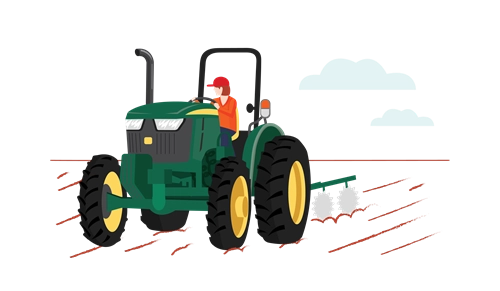- S
- T
- E
- M
Climate-resilient homes
Year 10
Learning hook
Use Google maps in street view to explore different locations in Australia, noticing the house styles in each one. Start with your local area, and then explore suburban areas in locations such as:
- Hobart
- Cairns
- Alice Springs
Alternatively, consider sharing static images of traditional housing types from across Australia (see the Resources section for some useful starting places).
Discuss with students any architectural differences they observe. Draw attention to the building materials used and design features such as window size, roof pitch, presence of eaves and covered outdoor spaces.
Explain that the potential challenges a house may face will vary by climate. These can include periods of extreme heat and humidity or extreme cold, varying amounts of rain or snow, vulnerability to flooding, and high winds.
Are there houses they feel are particularly well-designed for their climate? Ask students to take a screenshot or select an image to annotate to show features that indicate the architecture considers local climate. Students can share their findings with the class.
Girls in focus
Providing students with choice in their area of exploration enables them to pursue personal interests – they may have grown up in a different environment and be quite familiar with architectural styles and design advantages of houses in their area. Providing choice and enabling student voice supports students to feel included and valued.
Learning input
While houses have been historically designed to reflect local climates, an emerging challenge is to build homes that are sustainable and resilient in the face of changing climatic conditions.
This includes consideration of not just the design, but also the materials used to make the house and the technologies used to provide basic services. Sustainable, resilient homes require less energy and water and are comfortable, healthy and affordable to live in, even in the face of changing climatic conditions. This includes maintaining a comfortable temperature in winter and summer and being resilient to extreme climatic events, such as flood, drought or bushfire.
Share this 10-minute video with students to see some inspiring new home designs from across Australia. Students can also review this article to understand some of the considerations in designing, building or renovating sustainably.
The Australian Government has published ‘Your Home: Australia’s Guide to Environmentally Sustainable Homes’, a website that provides a wealth of information about designing climate-resilient homes. The website recommends that when designing or redesigning a home, people should consider the following questions:
- What are the local climate variables that could affect the building?
- Will predicted climate change impacts affect the site and the building?
- What are the likely consequences to the home in the event of extreme weather?
Girls in focus
Historically women have been under-represented in architecture careers and are now over-represented at junior levels within architecture. Girls may have had limited exposure to women in architecture and may not realise the variety of roles and creativity involved in this career. Students could listen to this podcast in which two women from Light House + Science architecture are interviewed about their development of sustainable architecture. More resources relating to women in architecture are provided in the Resources section below.
Listen to the podcastLearning construction
Explain to students that their challenge is to design a tiny home for a location of their choice. The house will only include small internal living spaces: one bedroom, a multi-purpose living space and a bathroom. Students can add levels and outdoor spaces, but they should endeavour to keep the overall footprint of the house small.
- Ask students to identify a location for their house. It doesn’t have to be local but should ideally be a location students have experienced.
- Students can explore real estate apps to locate a block of land near that location. This will be the starting point for their project.
-
Students then need to research the location. What daily temperatures does the location experience across the year, what does rainfall look like and how frequent are extreme events? How heavily treed is the site and what is the substrate of the site likely to be? What future climate change impacts may occur?
Explain to students that in designing their house, they will need to fill a gap in the Your Home website – currently the website doesn’t include a house design smaller than two bedrooms. The climate-resilient tiny house they design should be based on a design from the Your Home website that suits their general location, which they will then adapt the design to a tiny house footprint, taking into account the climate of their site.
Students should use the Your Home website to ensure they have considered design features, materials and technologies that confirm their house is both sustainable and climate resilient.
- Students determine where on the block their house will be situated, considering orientation of the house on the block.
- Students create annotated floor plans and sketches of their house, detailing the materials, technologies and design features they would include. They can use a digital tool or pen and paper for this task.
- Students can present their work or create a voice over answering the following three key questions:
- What are the local climate variables that could affect the building?
- Will predicted climate change impacts affect the site and the building?
- What are the likely consequences to the home in the event of extreme weather?
Girls in focus
Providing opportunities to engage creatively with socio-scientific issues has been shown to engage girls. Providing students with a choice of location enables them to engage with places that hold personal meaning for them.
-
Rubric
Assessment
Criteria
Beginning
Achieved
Exceeded
Sustainability design
Selects sustainable materials and technologies.
Selects sustainable materials and technologies and designs the house to reduce environmental impact.
Considers the house as a system and designs and selects sustainable materials and technologies that collectively reduce the environmental impact of the house.
Climate resilience design
Adapts house features for climate resilience.
Adapts house features and selects climate-resilient materials appropriate for the house location.
Designs house features and selects climate-resilient materials and technologies appropriate for the house location and future climate events.
House liveability
Designs a functional house.
Designs an aesthetically appealing, functional house.
Designs an aesthetically appealing, functional house that considers the lifestyle needs of occupants.
Communication
House design and explanation communicate key design features and considerations, including selection of some appropriate content, language and text features.
House design and explanation clearly communicate design features and considerations, including appropriate use of content, language and text features.
House design and explanation communicate design features and considerations effectively, including selection of appropriate content, language and text features.
Resources
- What House is That? A Guide to Victoria’s Housing Styles (Heritage Victoria)
- Sustainable architecture solutions (Inspiring Architecture in Australia)
- Your Home: Australia’s Guide to Environmentally Sustainable Homes: adapting to climate change (Australian Government)
- Simplifying Sustainable Home Design and Construction (Get It Right With Undercover Architect)
- Gender, equity, architecture (Parlour)
- The Definitive Guide to Australian House Styles (Fat Shack Vintage)
- How to design an eco-friendly sustainable home (Homes to Love)
- Jenny’s House case study (Lighthouse Architecture + Science)
- Sustainable Conscious Architecture (Sue Connor Architects)
- Women in architecture: Architectus design leaders Marina Carroll and Elizabeth Seuseu (Australian Design Review)










